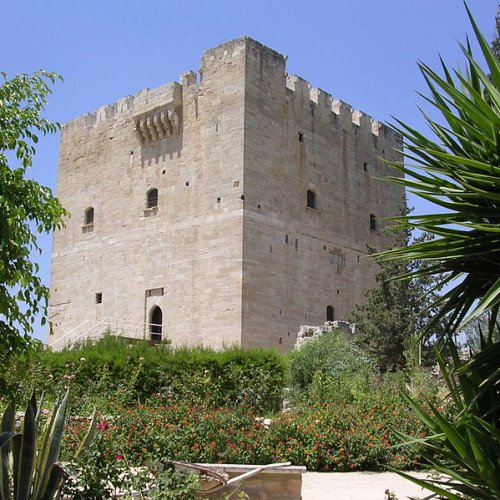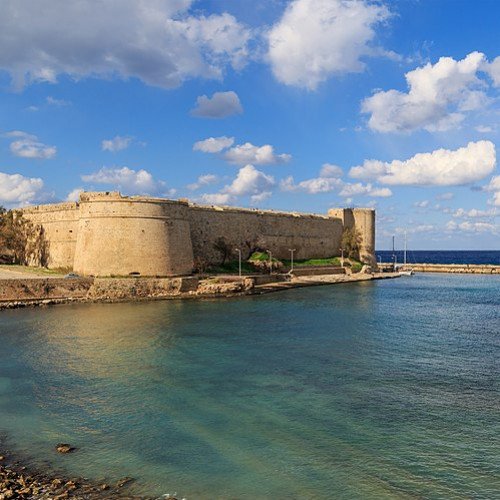Castles of "Cyprus" KOLOSSI CASTLE vs KYRENIA CASTLE

KOLOSSI CASTLE
Kolossi Castle is a former Crusader stronghold on the south-west edge of Kolossi village 14 kilometres (9 mi) west of the city of Limassol on the island of Cyprus. It held great strategic importance in the Middle Ages, and contained large facilities for the production of sugar from the local sugarcane, one of Cyprus's main exports in the period. The original castle was possibly built in 1210 by the Frankish military, when the land of Kolossi was given by King Hugh I to the Knights of the Order of St John of Jerusalem (Hospitallers). The present castle was built in 1454 by the Hospitallers under the Commander of Kolossi, Louis de Magnac, whose coat-of-arms can be seen carved into the castle's walls. Owing to rivalry among the factions in the Crusader Kingdom of Cyprus, the castle was taken by the Knights Templar in 1306, but returned to the Hospitallers in 1313 following the abolition of the Templars. The castle today consists of a single three-storey keep with an attached rectangular enclosure or bailey about 30 by 40 metres (98 by 131 ft). As well as for its sugar, the area is also known for its sweet wine, Commandaria. At the wedding banquet after King Richard the Lionheart's marriage to Berengaria of Navarre at nearby Limassol, he allegedly declared it to be the "wine of kings and the king of wines." It has been produced in the region for millennia, and is thought to be the oldest continually-produced and named wine in the world, known for centuries as "Commandaria" after the Templars' Grand Commandery there.
Statistics for this Xoptio

KYRENIA CASTLE
Kyrenia Castle (Greek: Κάστρο της Κερύνειας Turkish: Girne Kalesi), at the east end of the old harbour in Kyrenia is a 16th-century castle built by the Venetians over a previous Crusader fortification. Within its walls lies a twelfth-century chapel showing reused late Roman capitals, and the Shipwreck Museum. Kyrenia has existed since the 10th century BC. Excavations have revealed Greek traces that date back to the 7th century BC, but the site was developed into a city under Roman rule. Research carried out at the site suggests that the Byzantines built the original castle in the 7th Century to guard the city against the new Arab maritime threat. The first historical reference to the castle occurs in 1191, when King Richard I of England captured it on his way to the Third Crusade by defeating Isaac Comnenus, an upstart local governor who had proclaimed himself emperor. After a short period, Richard sold the island to the Knights Templar, and then to his cousin Guy de Lusignan, the former king of Jerusalem. This began the 300 years of the Frankish Lusignan Kingdom of Cyprus (1192–1489). Initially the castle was quite small. John d'Ibelin enlarged it between 1208 and 1211. The Castle's main function was military and the improvements consisted of a new entrance, square and horseshoe-shaped towers, embrasures for archers, and dungeons. The castle was subjected to several sieges. A Genoese attack in 1373 almost destroyed the castle, and the longest amongst the sieges, in the 15th century, lasted nearly four years and reduced the unfortunate occupants to eating mice and rats. By 1489 the Venetians had taken control of Cyprus and in 1540 they enlarged the castle, giving it its present-day appearance. The chief changes, such as the addition of thick walls and embrasures for cannons, were adaptations to changes in warfare in the form of gunpowder artillery. The Venetians also installed gun ports at three levels so that they could direct cannon fire against attackers from the land. Inside the castle, they built huge long ramps so as to be able to drag artillery up on the walls. When the work on the castle was finished, its walls also encompassed the small church of St. George, which the Byzantines may have built in the 11th or 12th century.